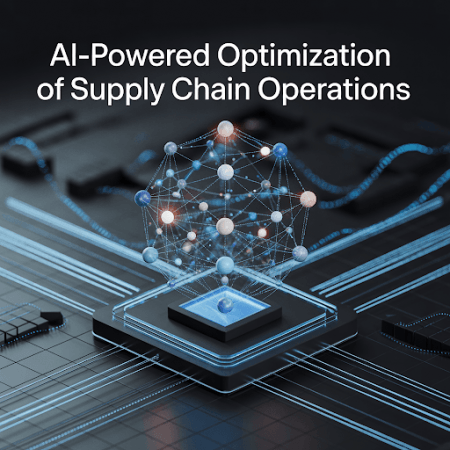
In today's world, Hari Suresh Babu Gummadi, a researcher focused on applied AI solutions in logistics and enterprise systems, presents a comprehensive examination of how artificial intelligence is reshaping supply chain operations.
Smarter Forecasting at Scale
Traditional forecasting tools struggle with demand shifts and new product launches. By integrating models like LSTM neural networks, XGBoost, and Bayesian frameworks, AI offers more accurate and rapid forecasting. These hybrid systems also use explainable AI tools, boosting trust among decision-makers and enabling scalable, multi-level insights.
Real-Time Inventory Intelligence
Reinforcement learning specifically through Deep Q-Networks has transformed inventory optimization. These systems adapt in real time to variables like temperature-sensitive products and unpredictable demand, reducing waste and costs while ensuring consistent service levels through distributed, automated decision-making.
Quality Control Through Computer Vision
In manufacturing, computer vision paired with digital twin technology is replacing manual inspection. Using models like EfficientDet, these systems detect defects quickly and accurately. Real-time adjustments, continuous learning, and integration with 3D models allow for sustained performance improvements and higher product quality.
AI Eyes on Supplier Risk
AI-powered NLP systems now proactively monitor supplier risk across financial, operational, and geopolitical domains. Advanced tools like BERT-based models and dynamic knowledge graphs scan thousands of documents daily, identifying and flagging potential threats with high precision and reliability. Attention-based algorithms assist in prioritizing the most critical and time-sensitive issues, significantly easing analyst workload, enhancing decision-making speed, and reducing the likelihood of costly supply chain disruptions or compliance failures.
Greener, Faster Logistics
To enhance logistics networks, AI employs advanced evolutionary algorithms like NSGA-II, integrated with simulation tools and geospatial analytics. These technologies optimize trade-offs among cost, service levels, delivery times, environmental impact, and resource allocation. Decision-makers can interactively model diverse scenarios, improving strategic planning, operational efficiency, and network resilience. This leads to faster deliveries, lower emissions, reduced fuel consumption, improved sustainability, and smarter, data-driven resource utilization across the supply chain.
Meeting Core Implementation Challenges
Data integration remains a primary challenge. Effective solutions build strong data pipelines and assign specialized teams to eliminate silos. Equally vital is computational efficiency—especially in time-sensitive functions. Hybrid cloud-edge architectures have addressed latency and reliability issues successfully.
Interpretability is another hurdle. To overcome resistance, organizations deploy multi-layered explainability tools suited to various user roles from visualizations for operations to trade-off analyses for executives.
Staying Ahead with Monitoring and Adaptation
Dynamic supply chains cause AI models to drift. Proactive systems now monitor performance and retrain models automatically, ensuring accuracy over time. These mechanisms turn AI from static tools into adaptable systems that evolve with changing business conditions.
Human-AI collaboration also plays a critical role. The best systems automate routine tasks while keeping strategic control in human hands. Confidence-based routing ensures human review for uncertain predictions while automating high-certainty ones.
Designing the Right Infrastructure
Success in AI implementation hinges on a structured framework. A layered architecture supports data ingestion, feature engineering, model training, deployment, and seamless business integration. Practices like containerized deployment, automated testing, and explainable interfaces boost system stability and adoption.
Organizations succeed by rolling out AI in phases starting with foundational data, then expanding to new functions, and finally integrating AI across the supply chain. This minimizes risk while accelerating long-term impact.
Looking Forward
Future research is exploring federated learning for secure collaboration, causal inference for smarter disruption response, and neuro-symbolic AI for enhanced explainability. Auto-adaptive models and task-sharing systems between humans and AI are also on the horizon.
In conclusion, the innovations described by Hari Suresh Babu Gummadi signal not just technological upgrades but a fundamental shift in how supply chains operate moving from reactive systems to predictive, adaptive, and intelligent ecosystems. As disruptions grow more frequent and complexity increases, AI-driven workflow optimization may well become the backbone of supply chain resilience and competitive differentiation.









